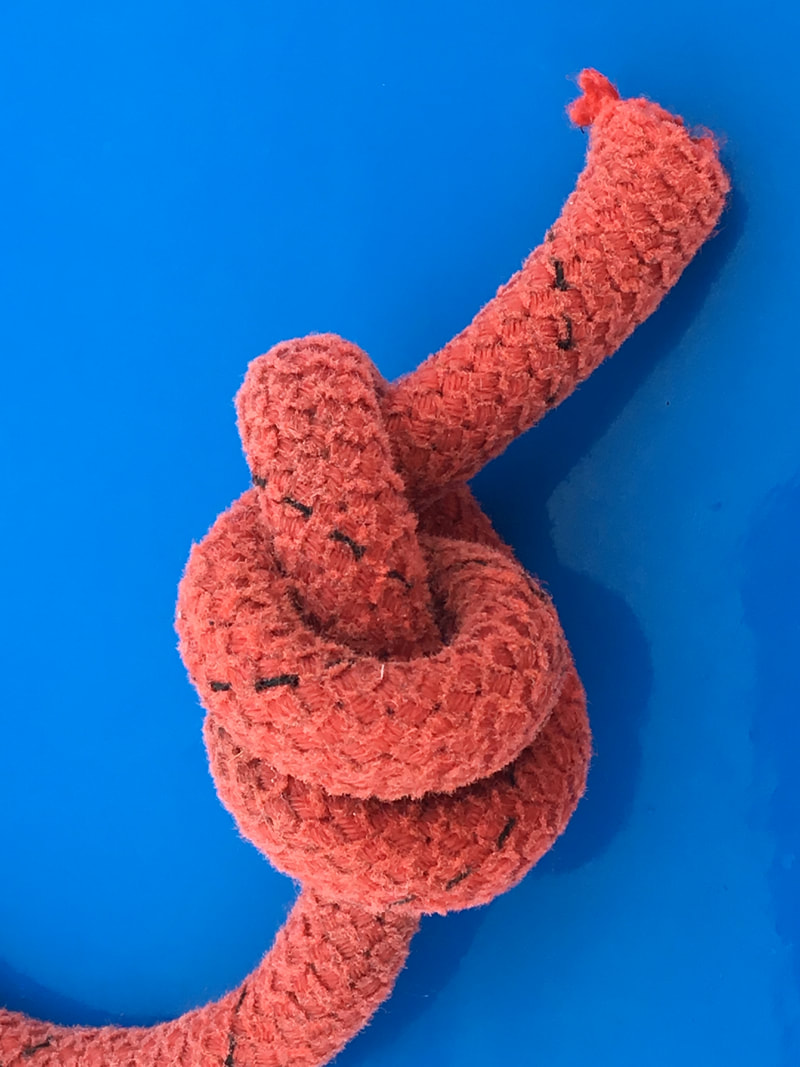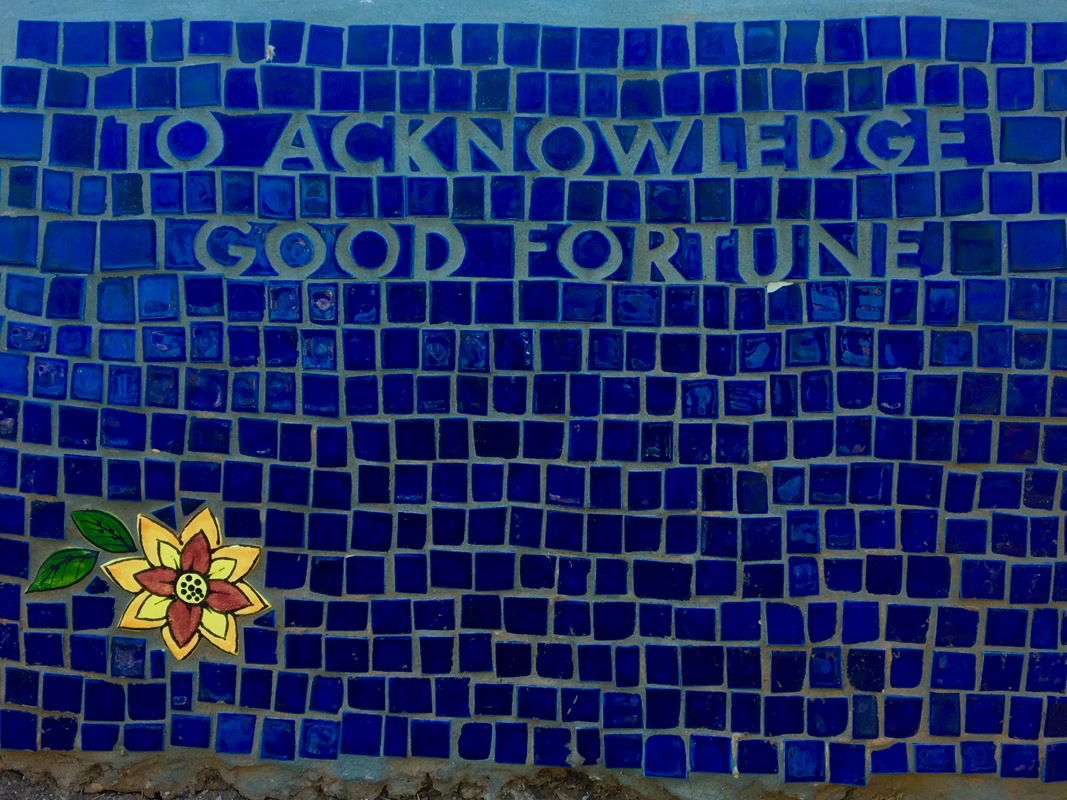|
In June of 1994 I narrowly escaped becoming a wife. Wifedom was not the problem. If a fight breaks out on a bus, is the bus the problem? No. Even if the argument involves some value judgment of the vehicle—“This bus stinks.” “No it doesn’t.” “It’s dirty.” “It’s cleaner than your mouth.”—the vehicle is simply the means of expression for the frustration, anger and misunderstanding that occurs between human beings.
And so it was with our near-marriage. Neither of us was an adequate communicator, at least not adequate to the situation. We had stumbled into relationship a few years earlier and had enjoyed a long peaceful spell, unlike the drama and fireworks of other relationships we had negotiated. That seemed a pattern for a good marriage, and on the second request I said yes. I remember it well. I had spent the morning at the MOMA in New York City, and found a little church to sit in on my way uptown. It was a shadowy place, with smelly Catholic incense leaking from the walls and a life-size crucifix above the altar. Several mumbling people sat in the pews. I slid into the empty back row. I didn’t mumble, but my thoughts weren’t organized or calm. I started noticing things, sensory things. A little daylight squeezed in through a couple of high, stained glass windows and that seemed hopeful. The floor was linoleum, and I kept thinking how I hated the feel of linoleum underfoot on a cold winter day. But it was spring. It was one of those warm spring New York days when the leaves are emerging and the whole city smells of…well, to be honest, exhaust and dogshit. On my way out of the church I thanked it, I thanked the building though I wasn’t sure why. I felt almost as if the church itself had decided to marry, relieving me of that burden and decision. So we almost did. Her religious affiliation was with the Quakers, who threw themselves into prayer and debate and finally, a year later, reached consensus around witnessing our marriage. Perhaps it was just too long to wait for affirmation, an affirmation given to more traditional couples without any such scrutiny. Yet I was impressed by the scrutiny. At the end of that year I felt I had left the scrutiny to others and done too little of it myself. I was vaguely aware that this marriage had become not just a test case for others, but a political sticking point for me. It had become an activist’s weapon, and lost its meaning as a marriage, as a commitment to another, as an act of love. We invited about thirty friends and family. Everyone was asked to bring a pie. A seamstress friend of mine made me a purple wedding frock. Two weeks before the wedding I called it off. The truth is, and the reason for telling this story now is to practice telling the truth, especially the hardest truths, some of which carry shame and all of which carry the knowledge of having done harm—the truth is that in my confusion and continued uncertainty about something called love, I glanced elsewhere and became attracted to someone else. That is the situation my not-wife and I were inadequately prepared for. We lacked the ability to sort out what was reactive and what was not, and whether, as a couple, we were actually suited to one another, and whether marriage was still the best way forward for us. We weren’t actually suited to one another, but a clumsy and unconscious unveiling of this was not helpful or necessary. It was hurtful. It caused harm to everyone involved. There. I’ve said it. And one more thing. While I regret that my not-wife was unable to forgive me, this has taught me that forgiveness, which is a word we use too often as a shallow platitude, isn’t for someone else to grant. Real, felt forgiveness has its source inside. To my surprise, because I’m still a clumsy animal prone to surprises, forgiveness of self and others is activated by truth-telling. I’ve wanted and feared to tell the regretful piece of this story, the shameful, guilt-ridden piece, for a long time. I broke the marriage. By my own actions I caused a great deal of harm. We have that before us now. Now go on.
3 Comments
Someone receives a midnight phone call. There’s static on the line. The message isn’t entirely clear. A location is mentioned, then another. A name is given. Then the muffled words “the goods.”
It sounds like a scene from The Godfather, but it’s happening right here in our town. We’re off to another day of vaccinarama, the continuing roll-of-the-dice-rollout that drives the good citizens of Arizona to intrigue in order to secure themselves an inoculation. Listen, as the medical worker who jabbed my arm said, “Consider yourself a lottery winner just to be here,” and I do. I consider myself one lucky duck to have glanced at my email at just the right moment in time to snag a place in line. That day outside the Elks Lodge, it looked like the crowd had arrived for the Flagstaff Folk Festival, eight months late or four months early. We were there to hear the songs of our youth played over and over again, live and local. But instead, it was vaccination day, and the smiles were radiant, the relief palpable. We queued up for forty minutes and longed for the live band, or even the piped-in music, but maybe by the time we head out for our second shot a quartet will be playing under the elk heads. One of my early memories is standing beside my mother and watching our family doctor uncork a little vial of clear liquid intended for me. He probably didn’t hand it to me with the words, “Bottoms up!” but still, there was a festive, let’s-make-a-toast mood in his office. The drink was syrupy sweet and not to my liking, but it would save me from something called polio, I was told. I was too young to know anything or think much about polio. Or smallpox, for which I was vaccinated in a signature speckled pattern on my upper right arm. In grade school, when a classmate fell ill with measles, mumps or chickenpox, and later German measles, we were sent to stand beside her and breathe in her germs and come down with these diseases ourselves in order to “get them over with.” It was awkward to arrive at the house of a girl I didn’t really know, enter her bedroom and sit close to her on an uncomfortable chair and come up with news from school. “Oh, the rabbit got out,” I remember telling one patient who just looked at me and sighed feverishly. Yet I left with what I was supposed to leave with every time, and put the childhood diseases behind me so they wouldn’t come back to threaten my life as an adult. We never thought there was much danger of that anyway, until we almost lost our friend Patrick. Patrick worked in Chad for a humanitarian organization. His young daughter, Ellie, came down with chickenpox and recovered easily but not without first passing on the disease to her father. He contracted chickenpox in his lungs and, close to death, was airlifted out of Africa and back to his home country of England. After some time in Intensive Care he recovered, and was able to return to Chad, but his proximity to death was sobering for all of us, and a necessary reminder of our great good fortune as beneficiaries of medical interventions, magic potions, syrupy sweet liquids and shots in the arm that saved us from crippling diseases and early deaths. The little glass vial of the polio vaccine was a precious, life-giving elixir. I was too young to know it, but I’m old enough to know now that a long line of sixty-fives and older, standing outside in the sun, shuffling slowly forward, happy to be there, excited to see one another out in the light of day—it’s a reminder that to be able to choose this way of keeping life close, of choosing life in this way, is a choice that belongs to everyone. This is a case, not the first nor the last, when what you do affects what I do, when my winning lottery ticket is worth less without yours. The intrigue, the crapshoot as I’ve been heard to call it, will level out here in the great state of Arizona, I hope, especially as more vaccine becomes available. But if we’re wondering how to do this thing, this thing we’ve never done before, a good first step might be to look around at the places where the rollout is working well, like our neighbor, New Mexico. The Grand Canyon state shares a long dusty border with the Land of Enchantment. Can’t we teach each other something? |
AboutA place to discuss writing or anything on your mind. All visitors are invited to join the conversation by commenting on posts, asking questions, and joining the newsletter below for even more opportunities to connect and converse! Archives
April 2023
Categories |




 RSS Feed
RSS Feed